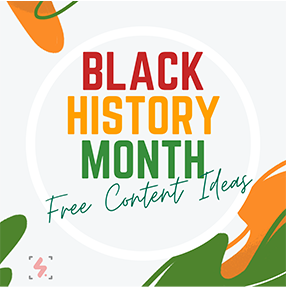Workflow: Sourcing and Organizing a Daily, Live Morning Show
Introduction: The Joy and Challenges of a High School Broadcasting Program
As the teacher responsible for a high school broadcasting program, I can't express enough how rewarding and fulfilling it is to see my students grow and develop their skills in a live, daily show. At the same time, it can be incredibly challenging and stressful to manage every aspect of content sourcing, organization, communication, and asset management. In this article, I'll share my experiences and insights on running a successful high school broadcasting program and how I've used various tools and techniques to streamline our workflow.
Content Sourcing: Finding Stories for Our Daily Show
Email: Our Main Source of Content
Email plays a significant role in sourcing content for our show. We set up a dedicated email account (info@bluedevilnews.com) to collect announcements, event information, and story ideas. To ensure we don't miss any important emails, our student producers check this inbox every day.
Just a snippet of our email inbox
By having this dedicated email account, we're able to streamline the process of gathering information and make it easier for people to submit content to our program. It's also a great way to encourage interaction with our audience and foster a sense of community within the school.
School Newsletter and Website: The Devil's Advocate
Another valuable source of content is our school newsletter and website, The Devil's Advocate. By regularly checking these platforms, we're able to stay informed about school events and news that we can include in our show.
Our students take on the responsibility of combing through these resources, finding relevant information, and bringing it to our attention. This not only helps us stay current with what's happening in the school but also gives our students valuable experience in researching and curating content.
Social Media: Staying Connected and Informed
Social media plays an essential role in our content sourcing process. Our students follow various school-related accounts, including student council, athletics, and cultural clubs and organizations. By doing this, we can stay informed about events and activities happening in the school community.
Moreover, we encourage students who are part of these clubs and organizations to share information with us directly. This helps us promote their events and activities, increasing engagement and involvement from the broader student body.
Student Assignments: Generating Content from Within
An essential aspect of our program is having students create news stories and packages as part of their assignments. We guide them through the process of writing, shooting, and editing, ultimately producing content that we can use in our show.
We assign two types of assignments: in-class stories, which require students to cover something happening during the class period, and video events, which focus on activities taking place outside of the normal school day. This approach allows us to generate a diverse range of content, including features, sports stories, and local business news.
These student-produced stories not only provide valuable content for our show but also offer potential opportunities for sponsorships and partnerships with local businesses.
Stacking the Show: Organizing and Assigning Content
Once we've gathered all our content, we hold a morning meeting where our producers present their findings, and we start organizing and assigning tasks. We use Rundown Creator to help us manage this process, which includes assigning stories to specific students and creating a rundown of the show's content.
We prioritize stories that focus on our school community and try to group related content together, such as sports, fine arts, or college and career advising. This helps create a more cohesive and engaging show while also allowing us to feature a diverse range of topics.
Communication and Efficiency: The Power of Slack
Slack has become an invaluable tool for communication and collaboration within our program. It allows us to send videos, images, scripts, and other resources across the team, ensuring everyone has access to the information and materials they need.
Using Slack extensions, we can easily forward emails and their attachments directly into Slack channels or individual users. This streamlined communication helps keep our team organized and efficient, making it an essential part of our daily workflow.
By maintaining a professional environment on Slack and setting clear boundaries, we've created a space that not only fosters collaboration but also encourages celebration and support among our students.
I have an article that deals with Slack as a Communication Game-Changer available here.
Writing Scripts: Rundown Creator and ChatGPT
Rundown Creator is an indispensable tool for organizing our show and writing scripts. With its built-in script templates and teleprompter feature, we can efficiently write, edit, and review scripts for our show. This tool also allows us to plan for live broadcasts from various locations on campus, bringing our show closer to the school community.
Scripting in Rundown Creator
Prompting in Rundown Creator
In addition to Rundown Creator, we've started using ChatGPT to assist with script writing. This AI tool serves as a great starting point for writing and refreshing our scripts, helping our students maximize their efficiency and improve their writing skills.
Asset Management: Using Google Forms for Smooth Workflow
Managing assets, such as graphics and videos, is crucial for our live production. To streamline this process, we use a Google form that allows students to upload files and provide essential information about each asset. This form generates a Google spreadsheet with timestamps and hyperlinks, ensuring everything is well-organized.
Our technical directors can access this spreadsheet within the TriCaster, making it easy to download and integrate assets into our show. This efficient workflow has been key to our program's success, helping us seamlessly incorporate various elements into our live broadcasts.
Final Thoughts: The Rewarding Experience of Running a High School Broadcasting Program
Running a high school broadcasting program is undoubtedly challenging, but the rewards far outweigh the challenges. Witnessing the growth, development, and pride our students take in their work is incredibly fulfilling.
Despite the occasional obstacles and setbacks, our students are determined to produce a high-quality show that represents our program, our school, and themselves in the best light. Their dedication and passion for their work make every challenge worth it, and their successes serve as a testament to the impact of our program on their lives.
Meet the Author, Josh Dempsey
Josh Dempsey is a video and film teacher at Marietta High School in Marietta, Georgia. With nearly 20 years of experience in the classroom, Josh is just as excited as his students to keep learning about the power and possibilities of this visual medium. He invites you to follow his students and their work online by following them on social media @bdn_marietta.
Josh loves traveling with his wife, Megan, and their two kids and more pets than should be allowed. If you want to follow their adventure and get some tips and tricks for RV travel and epic road trips, head over to their website ateastrollswest.com.













Got shaky footage? No problem! In this quick tutorial, learn how to use Warp Stabilizer in Adobe Premiere Pro to smooth out your shots effortlessly.